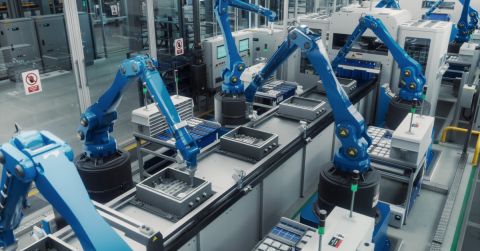Design Spotlight - Mesa Light

“You don’t know you’re onto something until you’ve had to scrap your plan.”
Equipped with his love for the outdoors and his experience as a designer of high-end interior lighting, Ravi Varma noticed a problem with traditional camping lights.
They’re bulky, for starters, which isn’t exactly ideal in a typically overstuffed camping pack, and they all produce harsh, direct light. It was a problem begging for a solution, and Ravi was pretty sure he had it figured out.
After multiple prototypes and a successful Kickstarter campaign, the Mesa Light was born. A slim, rugged, indirect lighting solution with rechargeable batteries.
 Early Mesa Light Prototype
Early Mesa Light Prototype
But as any designer knows, getting from solution to a final product is easier said than done. With that in mind, I sat down with Ravi at his workshop at A/D/O in Brooklyn to learn more about the design process for his deceptively simple camping light and how Octopart helped bring his idea to life.
As with most projects, identifying the problem was the easy part. Solving the problem, however, required some creative thinking. For inspiration, Ravi turned to restaurant lighting. By design, restaurant lighting exists as the polar opposite of a camping light: Instead of durability and utility, lighting in restaurants is designed to be soothing and unobtrusive. It quickly became obvious that his design needed to marry the calm, indirect lighting employed by restaurants with the utility and ruggedness that camping equipment requires.
Creating better lighting conditions was only half of the battle. To avoid driving up the cost and complexity of the design, Ravi needed to keep things simple and rugged. To that end, he reduced the design to its base components: A light source, a power source, PCB, and the housing to hold it all together. The fewer moving parts, the better.
To assemble the internals of his new light, Ravi turned to Octopart. There he was able to source LED drivers that met his requirements from multiple distributors before commiting to one supplier, as well as providing him with a way to keep costs down and avoid selecting components that would be difficult to source during production.
 Components were hand placed during the protyping phase.
Components were hand placed during the protyping phase.
The initial prototypes were all made by hand. Ravi found that trying to communicate his needs for the project with vendors for prototyping was difficult, so he opted for the hands on approach.
His first real breakthrough in design came in the form of collapsible legs that could snap into the body. This allowed for the body to be elevated to create the desired indirect light without compromising the sturdiness of the design. The body itself was designed to be similar to the average width of a laptop, ensuring that the light would easily fit in most backpacks. To ensure durability, a single piece of machine tooled aircraft grade aluminum serves as the casing. A rechargeable battery with a micro USB connector completes the utilitarian design and ensures that a charging cable is never hard to find.

Since the original prototypes were made by hand in small batches, the cost of testing each iteration was minimal. Once the design had been thoroughly tested and finalized, Ravi and his partner Eric brought their idea to Kickstarter for funding where it promptly shattered their original goal.
The result is a sleek, durable light that is just as useful on a desk as it is on a picnic table.
 Ravi Varma with the completed Mesa Light (Image Credit: Mesa)
Ravi Varma with the completed Mesa Light (Image Credit: Mesa)
As we wrapped up our conversation, Ravi offered some advice for other designers looking to bring their ideas to market.
“You need to start with a prototype. Don’t get caught up on the final version, make a first version and go from there. You don’t know you’re onto something until you’ve had to scrap your plan.”








